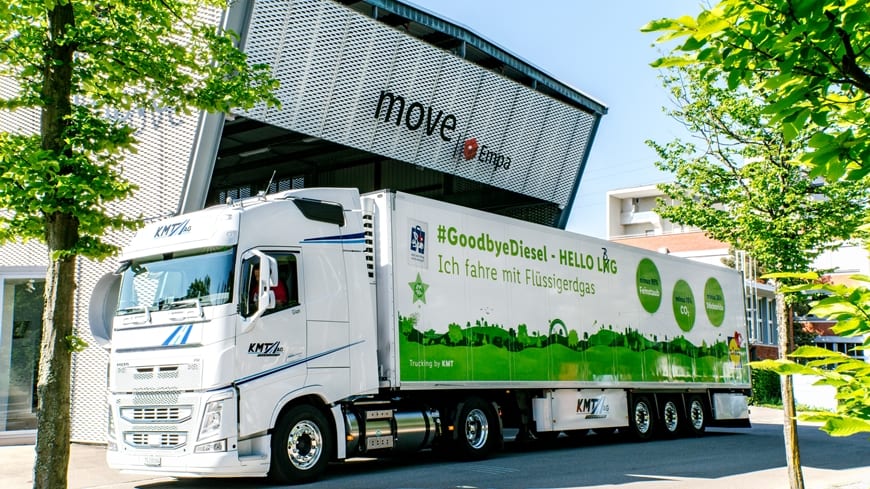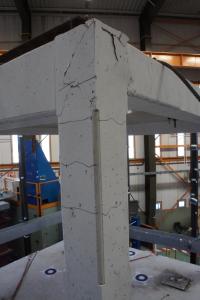
“Power to gas” is a key concept when it comes to storing alternative energy.
This process converts short-term excess electricity from photovoltaic systems and wind turbines into hydrogen. Combined with the greenhouse gas CO2, renewable hydrogen can be used to produce methane, which can be stored and distributed in the natural gas network. Empa researchers have now succeeded in further optimising this process.
The methanation process uses CO2, for example from biogas production, and this combined with hydrogen (H2) from excess renewable electricity, produces methane, which can not only be distributed simply and cost-effectively in the natural gas network, but can also be stored for longer periods of time. This means renewable energy is being used to produce a “quasi-fossil” fuel – the basic principle of “power to gas”.
The Sabatier reaction, which produces combustible methane from hydrogen and CO2, has been known for a long time. Now researchers in the Empa “Hydrogen and Energy” Department have succeeded in greatly optimising the process. A catalyst is required to bring about the reaction of CO2 with hydrogen using as little energy as possible; this catalyst can, for example, be made of nickel. The gas molecules react more easily with each other on the surface of such a catalyst, reducing the energy required for the reaction to take place. This is referred to as sorption catalysis. Empa researcher, Andreas Borgschulte, and his team have now combined a nanoscale nickel catalyst with a zeolite. Zeolites are crystalline aluminosilicates with the ability to absorb water molecules and release them again when heated.
The principle is simple: the chemical reaction of hydrogen with CO2 produces not only methane (CH4), but also water (H2O). The researchers use the hygroscopic (i.e. water-binding) property of the zeolite to remove the resulting water from the reaction mixture. The chemical equilibrium then moves towards methane. Result: a higher yield of pure methane and a more efficient catalytic process. As soon as the zeolite is saturated with water, it can be “unloaded” again by heating and evaporation of the water, and is then re-used.
The Latest on: Synthetic natural gas
[google_news title=”” keyword=”Synthetic natural gas” num_posts=”10″ blurb_length=”0″ show_thumb=”left”]
via Google News
The Latest on: Synthetic natural gas
- The toxic trouble with tires, for salmon and fish killson April 27, 2024 at 9:31 am
A chemical called 6PPD, which is added to rubber tires, is released when tires hit pavement. It reacts with ozone to become a different chemical, 6PPD-q, which can be extremely toxic — so much so that ...
- RBC Capital Sticks to Their Buy Rating for Suncor Energy (SU)on April 26, 2024 at 6:47 pm
RBC Capital analyst Gregory Pardy maintained a Buy rating on Suncor Energy (SU – Research Report) yesterday and set a price target of ...
- Earnings for Big Oil backpaddle as natgas prices tumbleon April 26, 2024 at 10:02 am
U.S. and European oil companies reported weaker first quarter results on Friday due to a sharp drop in natural gas prices compared with a year ago.
- Exxon Mobil’s stock falls after profit and production drop below forecastson April 26, 2024 at 5:05 am
Shares of Exxon Mobil Corp. dropped 2.4% in premarket trading Friday, after the oil and gas giant reported first-quarter profit that fell below forecasts, even as revenue beat expectations by a wide ...
- KSEE24 News at 5:00 PM Weatheron April 25, 2024 at 5:36 pm
Clearing skies this weekend and warmer despite the continued breezes. This forecast originally aired on KSEE24 News at 5:00 PM on 4/25/2024.
- Methane Eating Microbes - A Novel Solution For Greenhouse Gas Mitigationon April 25, 2024 at 7:00 am
Methane is a significant contributor to human-driven greenhouse gas emissions, but there is useful group of microbes that can help because they use methane for food.
- A complete guide to fashionable and durable sustainable leather alternativeson April 22, 2024 at 7:37 am
We asked experts about the best sustainable leather alternatives, the environmental impact of vegan leather in fashion and how to avoid greenwashing your closet.
- Readers respond: No rate increase for gason April 21, 2024 at 7:02 am
The Oregon Public Utilities Commission is considering a Northwest Natural Gas application for an 18% rate increase to take effect Nov. 1. The gas company is promising to decarbonize its gas grid ...
- Spot market natural gas prices for Friday, April 12on April 14, 2024 at 8:14 am
On Friday's spot market, 1,000 cubic meters of natural gas cost 9,629.06 liras, while the cumulative natural gas trade volume amounted to around 3.75 million cubic meters. Türkiye received 91.17 ...
- Spot market natural gas prices for Thursday, April 11on April 12, 2024 at 12:19 pm
The trade volume on Türkiye's spot natural gas market showed an increase of about 24.9% to 30.28 million Turkish liras on Thursday, Türkiye's Energy Exchange Istanbul (EXIST) da ...
via Bing News










